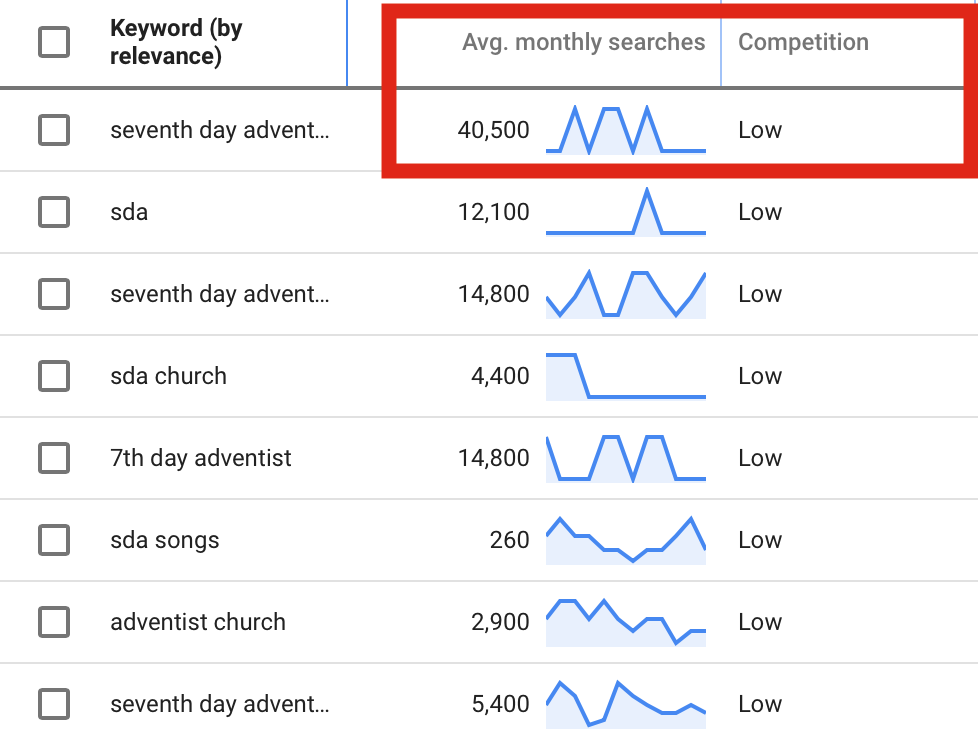Jamie Jean Schneider DommDigital Strategist for the North American Division  With the explosion of creative and tech savvy Christians trying their hand at digital mission work, many new terms have been added to the Christian vocabulary to describe this type of ministry. To make sure we understand the differences and similarities between them, it is worth taking time to create clear definitions. As children of God we are all called to do His work, and many find it useful to define their practical role in sharing the gospel—helping to shape their goals, find purpose, and communicate their mission to others. Therefore go and make disciples of all nations, baptizing them in the name of the Father and of the Son and of the Holy Spirit, and teaching them to obey everything I have commanded you. And surely I am with you always, to the very end of the age: Matthew 28:19-20. evangelismevan·ge·lism | \ i-ˈvan-jə-ˌli-zəm \ Evangelism is generally understood as the act of publicly preaching the gospel and the teachings of Jesus Christ to persuade people to adopt a Christian worldview. The word evangelist comes from the Koine Greek word εὐαγγέλιον (transliterated as euangelion) and originally meant a reward given to the messenger for good news but later came to just mean “good news” (Wikipedia). Evangelism, then, by extension, can be understood as publicly sharing the good news. The way it is packaged and delivered may change, but as long as the gospel is being shared, it is evangelism. Digital marketing is the promotion of products, services, causes, or ideas in the online space using digital technologies and tools such as the internet, social media, paid display ads, website platforms, and mobile phones. Therefore, digital evangelism is defined as promoting the good news of the gospel and the teachings of Jesus Christ in the digital space using corresponding technologies to persuade others to adopt Christian beliefs. A digital evangelist is one who engages in digital evangelism as defined above. With this in mind, how should digital discipleship be defined? disciplenoun dis·ci·ple | \ di-ˈsī-pəl \ Definition of disciple according to Merriam-Webster: one who accepts and assists in spreading the doctrines of another. In this context, a digital disciple is one who accepts and assists in the spreading of the doctrines of Christ through the use of digital tools in the digital space. However, digital discipleship is not limited to digital spaces but can, and often should, intersect with the physical world through the services offered. If we follow Jesus’ example as a model for discipleship, we should expand this definition to include showing genuine interest in people and seeking to fulfill their mental, physical, and spiritual needs before inviting them to follow Christ and adopt His principles. To do that, we have modified the definition of digital discipleship, as first presented by Rachel Lemons Aitken, Digital Discipleship in the Seventh-day Adventist Church, to be: Digital discipleship: a way to build relationships, meet the needs of the community, and advance the gospel message in the digital space, around a digital need or by utilizing a digital tool. missionary noun
mis·sion·ary | \ ˈmi-shə-ˌner-ē Definition of missionary according to Merriam-Webster: a person who undertakes a religious mission. Religious missions are traditionally seen as a means to promote Christianity, or another religion, in a foreign country. However, a digital missionary is one who shares their faith and beliefs in the digital space with digital tools and technologies, without being physically confined to a single geographical location. Digital missions are evangelistic campaigns that leverage digital tools and spaces for the distinct purpose of attracting converts to the faith. Digital evangelists, disciples, and missionaries all engage in digital mission work. Digital bible workers utilize digital technologies to share the gospel and stimulate religious thought by creating and packaging content that addresses relevant needs/questions and encourages people to advance in their spiritual journey. Digital bible workers build relationships with those in the broader community, online and offline, and usually within a specific geo-location territory, in order to create opportunities for one-on-one or small group Bibles studies held in person or via digital tools. They work in partnership with a local church and pastor to evaluate the needs of a community and determine relevant opportunities for outreach and service. They mentor converts in their development of Christian character and commitment to faith as well as train and equip new members for active discipleship roles. This role encompasses a mix of digital discipleship and evangelism to bridge the gap between working in the digital mission field and achieving real-world impact. Click here for a sample position description. We hope you found these definitions useful. Jason AlexisDigital Strategist for PastorsLine and co-author of reTHINK.Ministry. With immense love... how many church members does it take to change a light bulb?No, really. All kidding aside here. Is it something that anyone can do? Or does it require filling out forms? Perhaps a committee? Yes, a little absurd and over the top, but a satirical article in the Babylon Bee used this example to point to a more serious cycle that many churches and ministries are caught up in. As the article explains, a church deacon noticed a faulty light bulb in the church’s foyer area. He turned in the required “light bulb change request” paperwork for discussion at the next business meeting. After some cancellations due to winter weather, a meeting finally took place and the members voted unanimously to change the bulb. Now, as the article reports, all that needs to be done “is pass a vote to create a light bulb committee, elect a committee chair, and then get out of the way and let them do their job.” Sound familiar? Sure it does.Churches and ministries want, and in fact need, to be accountable. After all, they should be good stewards of the resources they have received—often people’s hard-earned donations. So, there is usually some type of management hierarchy, perhaps a Board of Governors. Often, a manual is created with procedures and forms. It makes sense because, again, it’s not a one-person show. It’s not a ‘you-based’ organization. It’s a God-based one. Clearly, though, there can be some overkill. And that’s what we’re talking about here. Situations which are out of balance. In other words, despite your place on the church spectrum, how often does your approval process cost you more than the relative cost of the item you are voting to approve? Let’s go back to the light bulb for just a minute or two… Picture a church foyer. A modest, 5-light chandelier hangs at the center with one dark bulb. At the moment, an energy saver light bulb to fit that light fixture would cost between $10-20. Now picture the business committee meeting. Five people sit around a table. Each has donated the time to travel to church and back home (let’s call it a 30 minute round trip) + the meeting time—perhaps somewhere between 1-2 hours. At a minimum, that’s about 8 people hours. The table they are seated around has coffee, tea, water, juice and two kinds of cookies. Someone took the time to buy those items and set them up—more people time. All this time has a cost: time away from work, family, hobbies and rest; time which could have be spent spreading the Good Word and/or ministering to those in need…..not to mention the cost of the refreshments. (Now we are kidding...a little.) Granted, the meeting may deal with other things besides a faulty light bulb but how many of those things are similar? So, does this approach serve our goals? We suggest that it does not and would like to propose a path in addition to the committee methodology which, again, IS an appropriate one for big and/or relatively expensive decisions. Another way for consideration.Let’s call it “Short and Simple”: a protocol in place to make quick decisions—which are cheap relative to your resource budget—without affecting your general governance policies and procedures.
A category where Short and Simple would work excellently is new ideas, especially adoption of digital technologies and strategies. The Short and Simple procedure could be something like this:
This protocol allows you to maximize your goals by facilitating a lot of free, or minimal cost, trials and errors. In addition, it frees up a lot of people time that can be spent doing more relevant things to build God’s kingdom. Amy PrindleThe Center for Online Evangelism is a missionary project devoted to developing online mission stations.  Now that you’ve established a strong foundation for your SEO strategy and can track activity and engagement, let’s get into the nitty-gritty of search engine optimization. Content—the right content--is what internet users are searching for. Many are ultimately looking for products, services, locations, restaurant recommendations, etc., but the reason they trust the internet to help them is because they can find content that educates them along the way. People want content that guides them toward making the best decisions; content that answers their questions. A blog post could convince someone to join a gym, or a Yelp review might convince a couple to try a new restaurant. Some are googling symptoms before taking their child to the ER, or searching for tips on getting out of credit card debt. Or maybe they’re bored, sitting in a waiting room, watching cat videos on their phones. There are a thousand and one ways to consume content. Optimizing your content for search engines helps you focus your content to best match what your target audience is searching for. But that’s the thing—how do you know what they’re searching for? Keyword research is the core of SEO copywriting: writing persuasive content based on search engine optimization principles. It removes most of the guesswork when figuring out which topics (related to your organization) make the most sense to cover in your content marketing. Whether writing titles and headlines or naming resources or products, it bridges the gap between your hunches, the data, and what information people actually need. Keyword research uses search query data from Google and other search engines to determine what kind of content interests people. Each phrase typed into the search box is like a voice proclaiming, “I want to see content about this!” By using the right tools and tactics, you’ll find out what terms or phrases people are googling and how often. It will also list how competitive those keywords are. Finding keywords that have a high search volume, but a lower rate of competition, is the sweet spot for your SEO content strategy. Writing about those topics improves the chances of your content being found in search engines. 1) Define your topic. For example, say you want to start a blog to help Pathfinder leaders. “Pathfinders,” of course, is the topic. But if you title your blog, “Pathfinders,” it’s not specific enough to get search traffic. You’d have to differentiate from Nissan Pathfinders, Pathfinder International, or the Pathfinder Roleplaying Game. Familiarity with your audience allows you to feature relevant keywords in your titles, headlines and posts, such as:
While definitely more specific than “Pathfinder” alone, these are also considered broad-match keywords, as they can still have a wide variety of subtopics. They’re certainly good ideas, and posts on these topics can be helpful and even enjoyed by your readers. However, they’re harder to rank in Google search results without further specificity. Let’s say it’s a burgeoning trend to create Pathfinder blogs. The broad topic of Pathfinder leadership is now a highly competitive arena. How do you get your blog to stand out? 2) Refine your topic. You have to get more specialized in your focus, so start brainstorming “niche topics”—subtopics within the broad subjects of Pathfinders and meetings and honors and campouts that people might be searching for information about. Some of these might be:
You can also start brainstorming possible blog posts for these subtopics and long-tail keywords:
These location keywords can be especially helpful in titles and meta descriptions, the summary of a web page: To make your blog or organization’s website specific to your area, mention which cities are involved, and make sure to list the address of your church or location. You could even list well-known areas nearby that members visit or volunteer. For security reasons, we do recommend caution regarding how much location information is shared online about Pathfinder and other underage group activities. You’ll also want to consider seasonality. Keyword activity will change depending on the time of year, especially in topics that deal with a school year, holidays, sports, or activities relating to spring, summer, fall, or winter. 3) Test your topic. Start by googling your topics, including any related words or phrases. Then ask yourself the following questions:
Maybe you find that the knot-tying honor already has several articles that are well-written and popular. There are lots of positive comments on those posts. Therefore, another topic would be more effective in making your blog stand out in search results. However, maybe there’s one particular knot you don’t feel the other writers have explained very well, even though the rest of the post is good. Maybe you’ll find a couple comments on other blogs about how they’d like more information on the hunter’s bend. You might then decide to write a post on “how to teach the hunter’s bend knot.” This is an excellent example of how research and testing can help shape meaningful content creation and allow you to create a long-tail keyword opportunity for your blog post. 4) Test some more. Here’s where dedicated keyword research tools come in. These tools access data that tells how many people are searching for a certain keyword or keyphrase (search volume), as well as how much content already exists about that keyword (competition). The sweet spot is when you find a word or phrase that has high search volume and low competition. Here’s an example from Google Keyword Planner: Many of these keyword research tools provide a ratio of search volume and competition, as well as what the average keyword costs “per click” if you were doing pay-per-click (PPC) advertising (but we won’t focus on that in this beginner’s guide). There are completely free options for keyword research, where you’ll be able to find similar data. These free keyword tools also show related keywords or phrases, which can be helpful for coming up with good content ideas. Overall, you’ll get a general idea what people are searching for, enabling you to create content that will connect your organization with the needs and interests of your audience. Here are some recommended free options for keyword research or keyword ideas: Keywords Everywhere is a free browser add-on for Chrome and Firefox that gathers data on every term you search for on Google. It’s especially easy to use since you don’t have to open a separate program; it already displays keyword results on the side of your browser window. It can also help you find related topics to cover in support of your main topic. Ubersuggest was created by renowned digital marketing strategist and author Neil Patel, because he felt that aspiring digital marketers should have a free keyword research tool they could trust. It is touted by many marketers as a great way to get keyword ideas for blog posts, and to possibly provide even more ideas than Google’s Keyword Planner. Keyword Planner has been the industry standard tool by which keyword research has been measured. It is still a technically free keyword research tool embedded in a Google Ads (formerly Google AdWords). You will need to set up a Google Ads account to use it. While it costs money to run Google Ad campaigns, you can do keyword research with this tool without an active campaign running. Twin Word allows ten free searches a day. This tool provides similar data to those already described, but is known for helping you find patterns, and for its filters that allow you to customize how you want results displayed. One such filter shows User Intent in five categories to help you determine the intent your audience may have when searching for a particular keyword. If it doesn’t match up with what you’re offering, you’ll want to find other keyword options. (Find out more about how and why you should consider user intent.) Google Search Console has functionality that shows what keywords are leading users to your website, as well as lite keyword research. These tools differ from true keyword research but can be very helpful for “informed brainstorming.” Answer the Public is a tool best used for brainstorming, rather than measuring search volume and competition ratios. It’s effective for finding out what kind of questions people are asking about a certain topic. It’s based on UK data, but the info is still relevant for content creators anywhere in the world. Google Trends allows you to compare two or more different topics to see which one is searched more often. Soovle is a customizable engine that unites the suggestion phrases from all the major providers (Google, Bing, Amazon, Answers.com, Yahoo, Wikipedia, Youtube) in one place. This tool can be a major help for search and content creation inspiration. YouTube has its own keyword research tools: vidIQ and TubeBuddy. Ubersuggest also has an option to look on YouTube. 5) Additional terms to know.Here are some common terms we haven’t yet covered in this section. If you’re using a keyword research tool, you’ll often come across these words, though some are only relevant for those investing in pay-per-click advertising. Location - Tools with this option can tell you the search volume and competition of various terms and phrases within a specified geographic location. Language - Find search volume data for searches conducted in a certain language. Search Volume - This metric displays how many people are searching online for the specified query. Competition - This number represents a ratio of the how frequently a term is searched for, compared to how much content already exists on this topic. Ideally, you want to find keywords/topics with high search volume and low competition. Lower numbers are generally 0.1 - 0.3, moderate competition is 0.4 - 0.7, and high competition is 0.8 and over. Pay-Per Click (PPC) Advertising - Most keyword research tools are made to support this type of advertising, in which advertisers pay to display ads on top of search results pages or on websites set up to show ads. Advertisers only pay for the amount of clicks they get, and certain keywords cost more per click than others. Keyword research is important for PPC because advertisers want their ads to show up when people type in the related keywords or phrases If you’re just using keyword research tools for content ideas or research, you won’t need to get in-depth into this subject. Cost per click (CPC) - In regard to paid ads, this is how much it would cost the advertiser each time someone clicked on their ad that contained this keyword. Click-through Rate (CTR) - In digital advertising, this represents the ratio of users who click on a link compared to the total users who view the ad, or the page on which the ad appears. 6) When to pay for a keyword research toolWhen businesses rely on search engine ranking for the profitability or exposure of their brand, they want the most exact keyword information possible—especially if their brand must survive in a highly competitive market. If your ministry relies on e-commerce or content marketing to thrive, AND it operates within a competitive industry, such as health, you would benefit from high-level keyword research tools that also provide insight on what competitors are doing, what they’re ranking for (or not ranking for), and a number of other add-ons that help you determine the best possible content opportunities. Especially if you want to boost your traffic through PPC advertising, this kind of research tool can help you choose the best content strategies for your ads. Here are a few of the top paid keyword research tools: Google Ads’ Keyword Planner provides more specific keyword data (notably in Search Volume) when you’re regularly spending over a certain amount on active campaigns (currently it looks to be around $1,000.00/month). Keyword Planner can also help you get a closer look at the search behavior of certain demographics. SEMrush is a comprehensive research tool. In addition to unlimited keyword research and keyword strategy suggestions, it also audits your website (and your competitors’ websites!) to find errors, SEO opportunities, and content “weak spots.” This tool has proved useful in many businesses’ Online Reputation Management (ORM) efforts, as it can even show how much competitors are spending on ads and for which topics. Ahrefs dives deep into competitor research, provides keyword opportunity alerts, and gives access to a wealth of digital market data. It can also monitor how your site’s ranking changes over time. Keyword Explorer by Moz has long been used by digital marketing professionals to gather data from its “vetted keyword database” to apply to their content marketing strategies. While your ministry may not yet have the budget for keyword tools like these, many come with a free trial period, enabling you to test how useful a particular tool might be for your organization. 7) Creating content from keyword research Once you’ve utilized these tactics and tools to determine which topics are popular and which content opportunities exist, it’s time to use this knowledge for your content planning. Keyword research used to be much more technical, more of a science than an art. It’s not like that anymore. Due to shady content practices like “keyword stuffing”—when content writers would repeat keywords over and over on a page so it would rank higher in search results—Google has taken measures to ensure its users aren’t led astray by webpages that are trying to “beat the system.” Google has since improved its algorithms to detect the thoroughness of topic coverage, rather than keyword density. It factors in synonyms, phrases, and related topics, so that when a page is written about a single topic and covers it well, that page is ranked higher in search results. Keyword research does more than just tell you which words to use. It tells you which topics are popular, which topics are competitive, and what your best content opportunities may be. This is good news! This means that the organizational methods you learned for writing essays and research papers in school will now pay off in a practical way. Begin by writing an introduction to a topic (one webpage), then cover the topic (another webpage), then cover related topics (more separate webpages) or background information (another separate webpage or two). It’s essentially writing an outline, and each section of the outline is a webpage. Blogs organized like this score highly in both search engine visibility and user-friendliness. For good example of this, visit sdadata.org/seo. From a visitor perspective this help with navigation within a specific topic. Be careful not to take this concept to the extreme, creating a confusing maze of short pages. NOTE: This outlining method also comes in handy when a webmaster is designing an optimized sitemap, or navigational structure, for a website. With topics and topic coverage having a stronger influence on search engine ranking than individual words or phrases, this better rewards quality writing and presentation. However, keywords do still matter! Keyword research is done so we know what words and phrases people are using. We still want to use those words and phrases as often as we can on a page—naturally. If it sounds hokey to keep repeating a phrase, find another way to say it that means the same thing. Overall, you still want the content to read as naturally and conversationally as possible, as if you were telling this information to a friend. Click here for tips on how to write conversationally. Here are some tips for thorough topic coverage in natural language:
Most content pieces can be written in a similar fashion. You work your way through a topic, writing as much applicable information as possible over multiple blog posts. Remember to keep your posts between 600-1,500 words (in most cases) for digestibility. You might also throw in pictures and videos to supplement the text. You might even post a quick quiz at the end so readers could make sure they gathered the info they needed. Then, there might be a form or comment section to submit questions about the topic. Content organization techniques that may help you include outlines, topic trees, bubble graphs, etc. Using this as your foundation for content creation helps you determine topical goals, objectives, and key takeaways. Plus, it makes the whole writing process easier. We’ll discuss types of content presentation in the next section. Learn more:
Click here for the full SEO series and resource guide. Felecia DatusThe Center for Online Evangelism is a missionary project devoted to developing online mission stations. The Billboard AnalogyImagine your church was given a huge billboard on Highway 401, North America’s busiest highway, carrying about 420,000 vehicles per day. (That means A LOT of people would see your sign.) Your billboard invites people to a special program at your church. But suddenly, you’re told that you have to pay for the days you want your billboard to be unveiled. You have two choices:
Hopefully, you would pay to unveil the billboard. Why? Because when it comes to letting people know of Jesus Christ, every penny is worth it. Why consider digital ads?Let’s face it – most of the world’s population is online. Today, the question is no longer whether Seventh-day Adventists should have an online presence, but rather, how do we increase our presence? What can we do to be more effective at sharing the Gospel online? Digital ads, specifically Facebook ads, are like that billboard on Ontario’s busy highway. 1 billion people log on to Facebook every day. This number includes people in the area around your church who you want to reach. Isn’t it enough to have a Facebook page?To strengthen our online efforts, churches and ministries have Facebook pages, Instagram and Twitter accounts, create YouTube channels, and use other methods of digital promotion. If your church or ministry has a social media platform, kudos to you! But it’s not enough. Remember the billboard analogy? The billboard is up but no one will see it unless you pay for the tarp to be removed. According to the Digital Marketing Institute, organic reach is “the number of people who have seen your post through unpaid distribution.” Going back to our billboard scenario, organic reach represents the number of people who intentionally leave their cars, climb up the billboard. and peak under the covering. We can no longer count on the organic reach of Facebook posts. If you don’t put money behind your ad or posts, less than 2% of people who follow your page will see your content. What are Facebook ads?Facebook ads are paid promotional material that targets a specific audience in the effort to let more people know about your church or ministry’s programs or services. These can be:
More practically, if your church is offering a Bible-based financial help seminar, an after-school program for kids, or they’re giving out winter coats to needy families, should these be advertised on social media? Almost 20% of people think not! In a recent poll, 81% agreed that we should be advertising on social media platforms while the remaining 19% thought not, for varying reasons. What do you think? As you mull over this, remember the church has been “advertising” for as long as it has existed. However, the methods are constantly evolving. Your church is already advertising if:
If your church is still printing flyers to give out to your community, consider the words of one CEO: Some…believe that an attractive flyer mailed out to countless, untargeted recipients will bring results. Unfortunately, this is just one way to kill lots of trees, waste plenty of expensive ink and give the post office your hard earned money without getting any kind of return. Even the best-designed flyer won’t be very effective at producing a response, especially if sent to cold, untargeted [individuals]. What’s the purpose of “advertising” your ministry online?If you sense a twitch in your spirit because the words “Gospel” and “advertising” are used in the same sentence, that’s understandable. Besides, we don’t ever want to convey the idea that Salvation is a product for sale. When we promote or advertise, we extend an invitation to those online to be a part of something bigger. For digital disciples or ministry workers, our reason for promoting what we do has eternal value. Digital disciples (those who share the Gospel online) recognize their responsibility to let others know of the saving grace of Christ. We share the Gospel in various ways (preaching, health classes, education, feeding the hungry, clothing the naked, defending the defenseless, etc.). When we’re planning an event, we want to find the most effective way to get the news out. The purpose of advertising is to:
With 2 billion people using Facebook every month, you are guaranteed to reach someone in your target audience. What should the church be advertising?
“Neither do people light a lamp and put it under a basket. Instead, they set it on a lampstand, and it gives light to everyone in the house” (Matthew 5:15 NIV). So it should be with what the church offers. We want as many people as possible to know. More people need to be made aware of what the church offers. Online ads have the possibility of giving the world a better idea of who we are. When a product or service is worth it, creators focus on how they can use all the methods available to them to promote something they believe is useful to consumers. Knowing how useful our ministries are (online and offline) will push us to work feverishly to use as many tools as possible to reach more souls. How do Facebook ads work? Now that we’ve established why online ads are important, let’s get to how to actually create Facebook ads. HubSpot recommends keeping these things in mind when creating ads on Facebook:
Create a Facebook ad in 7 steps:
So, should you advertise on Facebook?Absolutely! Effective advertising on Facebook increases the chance for more people to learn about your church or ministry. While we promote the church to those in the community, we shouldn’t neglect those who are seeking for truth online. However, it is critical that churches and ministries remember that it is NOT ads (digital or otherwise) that win souls. The Holy Spirit wins souls. “There is a necessity, it is true, for expending money judiciously in advertising the meetings, and in carrying forward the work solidly. Yet the strength of every worker will be found to lie, not in these outward agencies, but in trustful dependence upon God, in earnest prayer to Him for help, in obedience to His Word” — Testimonies, vol. 9, p. 110. (1909) By promoting your church or ministry activities or programs online, you let more people in on something life-transforming. Has your church or ministry used Facebook ads? What worked for you and what didn’t? Tell us below! Reposted with permission from centerforonlineevangelism.org. Facebook Advertising Resources:
Helpful articles:
|
Archives
August 2020
Categories
All
|
||||||
- Home
- BLOG
-
RESOURCES
-
RESOURCE MENU
>
- ADVENTIST IDENTITY GUIDELINES
- BIG DATA RESOURCES
- BRANDING, IMAGE & DESIGN RESOURCES
- CHURCH/MINISTRY SPECIFIC RESOURCES
- COPYRIGHT & TRADEMARK BASICS
- COURSES
- EMAIL RESOURCES
- GUIDANCE FOR HIRING SOCIAL MEDIA POSITIONS
- PODCASTS
- REPORTS & CASE STUDIES
- SOCIAL MEDIA RESOURCES
- (SOCIAL) VIDEO RESOURCES >
- TEXTING 4 CHURCHES
- TRACKING & ANALTYICS
- WATCH VIDEOS & TUTORIALS
- WEBSITE TIPS
- SOCIAL MEDIA GUIDELINES
-
RESOURCE MENU
>
- SEO
- Digital Discipleship & Evangelism
- COVID-19 RESOURCES
- eNEWSLETTER





 RSS Feed
RSS Feed